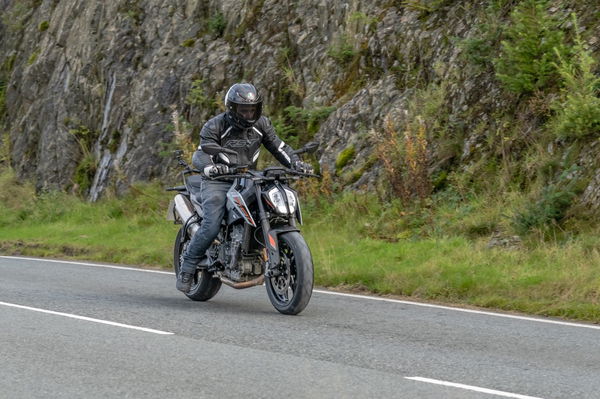Living with the Triumph Tiger 1200 GT Pro
We’ve spent most of this year blatting about the UK on the wonderful Triumph Tiger 1200 GT Pro - the lightest, most powerful, and highest-spec Tiger 1200 to date.
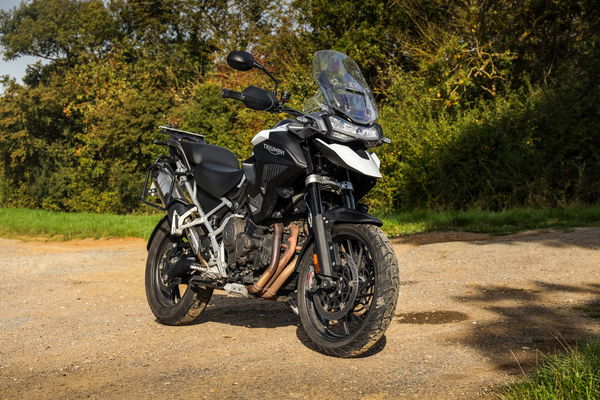
For the most part, a big adventure bike like the Tiger 1200 GT Pro is the perfect steed for a long-term loan. It’s big enough to carry my kit bag for airport runs, has heated seats and grips for winter commutes, and has an expansive frontal fairing that keeps at bay the worst of the wind and the rain.
So, the perfect machine to choose for a year of whizzing about the UK. Well, it was, although, after the launch of the bike, I did really have my heart set on the Rally Pro version of the Tiger 1200. And the weird thing was, there wasn’t any particular reason for that. I rarely take a big adventure bike like this off-road, and overall, the Rally Pro doesn’t do any of the things that I do any better than its road-biassed sibling. In truth, it was the Rally Pro’s styling that had won me over, with its unique green and white colour combo and spoked wheels, it probably looks more like a proper adventure bike than pretty much anything else on two wheels.
GT Pro long-term update
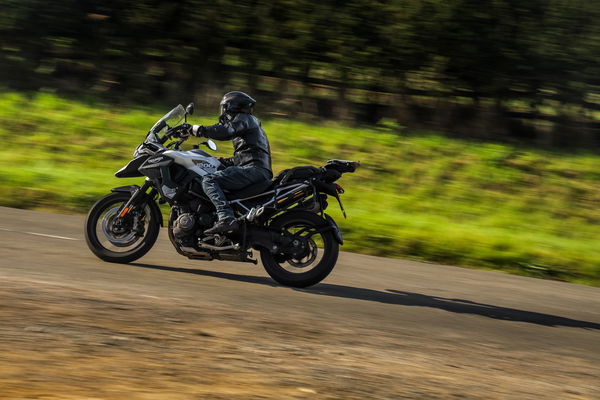
There are two major changes for this generation of Tiger 1200, and they come in the form of the bike’s weight, and that new T-plane engine. We kind of already knew what the engine was going to be like having already experienced the concept in the awesome Tiger 900 that was introduced in 2020. What it does, in layman's terms, is provide the ride with a sort of two-engines-in-one character, feeling more like a V-twin below 3,000rpm, and more like an inline triple above it. With that change in engine characteristics, you do lose out on some of that silky-smooth delivery you got with the old Tiger 1200, but the benefits of the system override all of the negatives.
You can read a full article on how the Triumph T-plane engine works here, but in short, it does away with 180-degree crankpins and instead sets them at zero, 90, and 180 degrees. The firing order of the engine is also a big part of the story here, and with a ‘1, 3, 2’ firing order, what you have - in effect - is two combustion events, and then a longer pause before the third and final combustion event in the cycle. The design boosts the low- and mid-range torque feeling but also allows the rear tyre more time to hook up with the trail when riding on loose and muddy surfaces. Away from the trail though, it’s the mid-range torque that will be the biggest boost, and third and fourth gear overtakes are completed much more swiftly and now more often than not without requiring a downshift.
Cruising on the motorway, the new Tiger 1200 is ever so slightly more vibey than the previous generation bike. It’s not so much through the handlebars or the pegs that you’ll feel it, as they are both nicely damped, but a slight resonance through the seat and the frame can be felt. If you’ve never ridden the previous generation bike, you’ll probably never even pick up on it and, compared to bikes like the BMW R 1250 GS and KTM 1290 Super Adventure S, it's still a much smoother proposition on a long motorway cruise.
What is the tank range?
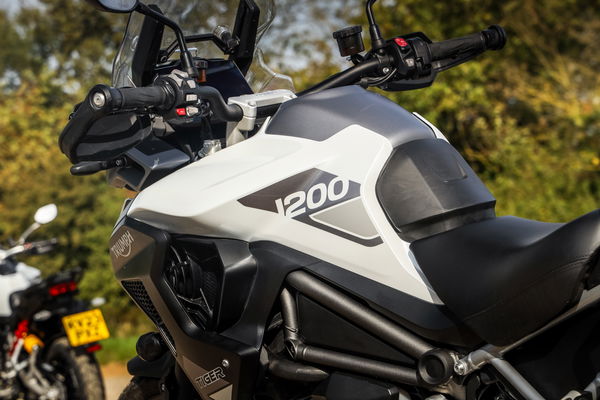
In GT Pro spec the Tiger 1200 gets a 20-litre fuel tank, while the two Explorer models of the GT and Rally gain the 30-litre item. Handily, my commute to the Visordown office in central London is exactly 200 miles, and I can comfortably complete this in one hit without refuelling. I’ve pushed on past that on a couple of occasions, and taken the onboard range calculator down to zero and beyond, on one occasion managing to eke out 224 miles keeping local and not too far from a petrol station. Even then the bike was still pulling cleanly without any sign of fuel starvation, and when I refilled the tank I managed to get 18.5 litres in it, leading me to believe the range calculation has a bit of a safety net built in.
Handling, suspension and comfort
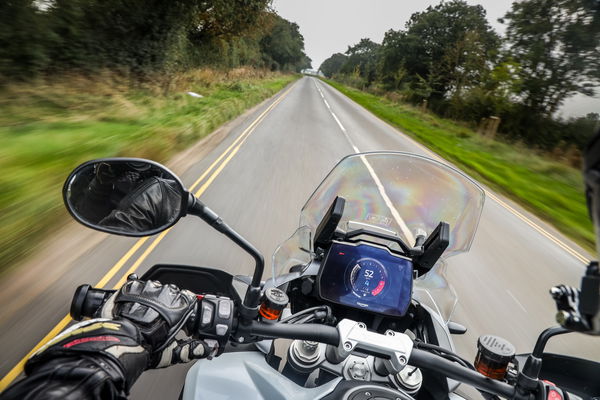
With its all-new frame and chassis configuration, the new Tiger 1200 is a very different proposition than its predecessor. The step-over is narrower for starters, making handling the bike a much easier proposition for shorter riders - like me! Triumph has also introduced an Active Preload Reduction system for the updated machine that drops the seat height by reducing the preload. Once the bike gets up to speed again the preload is reintroduced taking the bike back up to its predetermined setting. Depending on the suspension setting the bike is in, and which model of Tiger 1200 you are riding, the system could reduce the seat height by as much as 20mm, making it an even easier proposition for vertically challenged riders. Sadly, though, the update didn’t arrive on the bikes at the launch (it was added earlier this year and installed as a software update when serviced), so we’ve not had a chance to test it.
The system links to the Showa semi-active electronically adjustable suspension, which is also all-new for this latest generation of the bike. The system also automatically adjusts the preload to take into account the weight of luggage and a passenger.
The main difference between this version and that found in the previous generation is in how much more composed the bike feels, especially when you push on. The damping seems to react much better to bumps and deviations in the road and is nowhere as soft and wallowing as the previous machine. You still don’t get the levels of adjustability that are offered by bikes like the Ducati Multistrada V4, which lets you really drill down into individual settings, and instead the Triumph allows you to tune between comfort and sport settings. It’s a bit of a one-size-fits-all approach and, while it has its drawbacks (namely that you can’t tune in bespoke damping, preload and rebound settings), it does at least mean anyone can tune the overall feel of the bike, safe in the knowledge that they won’t bugger up the overall handling dynamics of the machine.
On top of the rider-selected suspension tuning, the bike also has bespoke settings for each of the riding modes, with sport offering the most support on the brakes and in turns, while off-road softens the rebound and adjusts the pre-load to give you the most ground clearance. Further shooting down my ‘I want the Rally Pro’ longing from the launch, my bike has spent all of its miles (and I do mean every single one of them) in Sport mode. Here the base suspension setting is a perfect mix of braking and corner support, with enough cushy damping to deal with the mess of potholes on the UK road network. The nice thing about the Triumph/Showa system is that, should the mood take me, I can quickly and easily jump into the menu and stiffen up the setting or roll it back for a more compliant ride.
In standard trim, the GT Pro's spec level is already quite high...
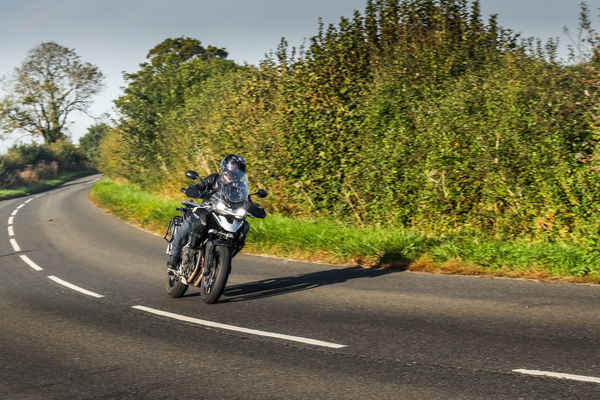
In stock trim the Tiger 1200 holds its own in terms of the level of kit you get with the bike. The handguards, fog lights, heated grips and seat are all standard fit features. On top of that, my bike has the 52-litre top box and rack, and the two pannier mounting racks added to it. I’ve not often had a long-term bike that has been fitted with a top-box, normally opting for removable panniers, and I think the GT Pro’s expansive boot has won me over. The main wins for me are that I can still filter through the traffic in London without having to lose luggage space - as I would when removing a pannier, and the bonus of being able to take two full-face lids once I’ve reached my destination is a massive bonus. The mounting system for the top box is also extremely easy to use, and all it takes is a turn of the key and a click of the button to have the case removed from the bike revealing its much trimmer, sleeker form.
I’ve spent numerous trips on the Tiger 1200 schlepping to one of the UK’s many ‘London’ airports, and have found the handling even when fully loaded with my luggage (quite often mounted too high and too far back) to still be safe and dependable. The automatic preload adjustment does a stellar job of dialling in enough to keep the weight over the front end, helping to maintain the contact patch of that 19-inch tyre.
Away from the motorway and on a twisty is where the Tiger 1200 really sets itself apart from its predecessor. The 25kg reduction in weight has a huge effect on this, but there is more at work here than simply slimming down the T1200. Mass centralisation was at the centre of the redesign, with the engine and frame both playing a big part in this. The new engine is lighter overall and much more compact, allowing it to be placed in the frame at a location and angle that benefit the handling dynamics. The drivetrain has also been slimmed down, along with the new frame that is a full 5.4kg lighter than before. None of these are small, insignificant numbers, and added together they make a huge difference to the way the new bike handles. There isn’t a sniff of a cumbersome, belligerent front end with any of the new bikes, even the Rally Pro and Explorer, both of which sit on 21-inch front wheels. In fact, it’s only when manually handling the bike or pootling around town at very slow speeds that it feels the slightest bit heavy.
Seat comfort on a long tour is a standout feature
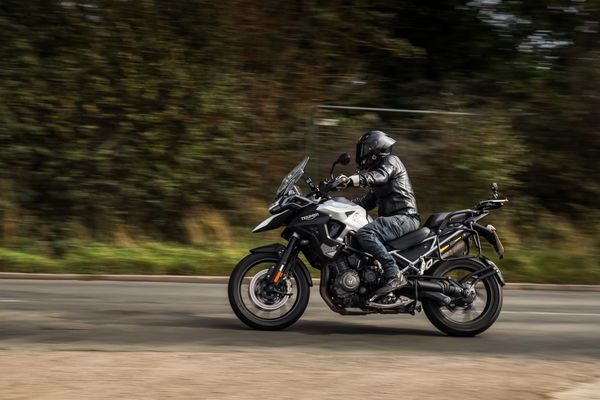
Having spent about 6,000 miles on the T1200, and most of those being on the motorway, one of the stand-out features of it is its comfort. There is no feeling more demoralising than heading back into the UK from a sunny launch somewhere in Spain, only to be greeted by high winds and sideways rain on your return. The T1200 does on many fronts negate that feeling though, as in a number of ways it is just the bike you need for a sopping wet ride in soggy conditions. As mentioned above, the screen and front fairing of the bike have both been extensively honed and they do create a tidy little bubble to cower behind when the weather gets crappy. The hand guards aren’t the biggest I’ve come across, and I did have to tweak the position of mine to get them to cover the backs of my hands and the cuffs of my jacket. Once I’d done that, though, they have done a decent job of keeping my hands warm and dry, and I get no annoying drips racing up the sleeve of my jacket. Mated to the heated grips (standard on this model) it’s about as cosy as your hands will get on a bike, without opting for electrically heated gloves. The heated seat is also very good, heating up quickly and providing a consistent and high level of heat to keep your backside toasty. One slightly annoying (but unavoidable) trait of the heated seat is the need to unplug the pillion seat if you want to access the underseat storage. There’s a handy mobile phone charging area under the pillion seat, which keeps the phone safe and on charge while you ride. It can be a bit of a faff to get to, though, as the connecting wires to the seat are fairly short and mean you can’t lean it anywhere handy as you disconnect the wires to it.
Are there any issues?
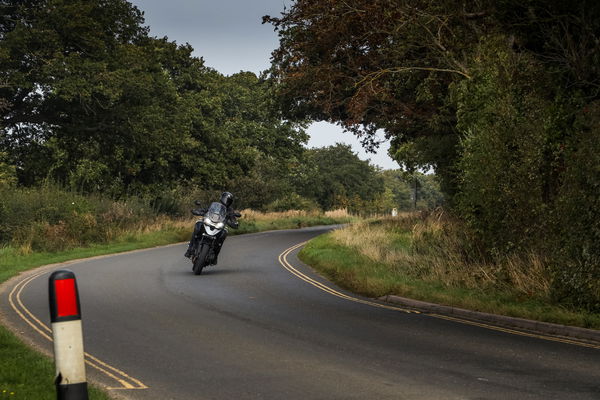
While the majority of my time with the bike has been plain sailing, a few gripes have raised their respective heads. The first one is with the Bluetooth connectivity to the all-new TFT. While the TFT is a fantastic-looking thing that’s clearly laid out and easy to use, the Bluetooth connectivity hasn’t been quite so slick. I’ve used it probably a handful of times, and each time it’s been a bit of a rigmarole of pairing, un-pairing, forgetting the device, and then pairing again to get the system to work. I even had one trip to Triumph’s Hinckley factory for an event and asked one of the techs to pair it for me, to show me if I was doing anything wrong. Even then it took him a good ten minutes to get the system to hook up and work correctly. Another issue arose with the navigation system that is powered by your phone and displayed to you via the TFT. I was working the London Motorcycle Show at the Excel arena, so I set up the system to help me navigate the myriad road closures that lay in wait. For some reason the system ignored the North Circular, which would have given the quickest access to the M1 and M40, and instead sent me on a death-defying dash, along the banks of the Thames and all the way up Regent Street, sending me out of London along the M4 motorway. It was only then that I realised what was going on, and it was already too late; I was basically locked into this cross-London dash that fed me into the midst of the capital’s rush hour.
Another minor gripe, and I really am nit-picking now, is how the left-hand wing mirror seems to drink water when it rains, and then unleash it like a torrent onto the back of my hand and up my sleeve when I take the steering lock off and begin to move the bike. Call me an idiot (You’re an idiot - Ed) but I really should preempt this and allow the wing mirror time to drain before moving the bike. Or should waterproof wing mirrors actually already be a thing in 2023?
So, is the GT Pro the one for you?
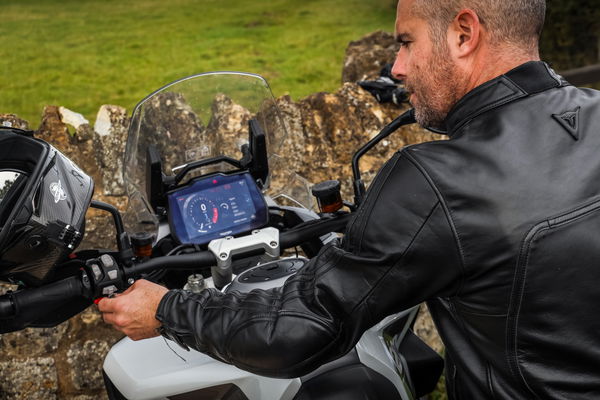
At the end of this mammoth year-long loan, and with 8,000 miles now under our belts, the GT Pro has been nothing but a trusty, faithful and comfortable steed to undertake the most tedious of journeys on, as well as one of the more interesting. It’s like a warm hug on a cold day, and has never not started, grumbled or given me any trouble whatsoever; and it’s handled the worst of the winter weather surprisingly well. I’m not a meticulous washer of bikes, and instead will swing by a jet wash once a month for a fairly half-arsed attempt at a clean. While some of the fasteners and fittings near the bottom of the engine have started to show some evidence of winter’s bite, I’m sure that, had I been more fastidious with the weather protectant, the lower extremities of the bike would be fairing even better.
The GT Pro also did something else, though - it changed my feeling about which Tiger 1200 I’d actually want to own. Yes, the Rally Pro and Rally Explorer with their slinky white frames and matt-finished bodywork are bloody lovely things to look at, but the only thing they do that the GT Pro doesn’t is go harder off-road and haul themselves over bigger obstacles. Thankfully there aren’t many situations that call for that on my commute to London.
